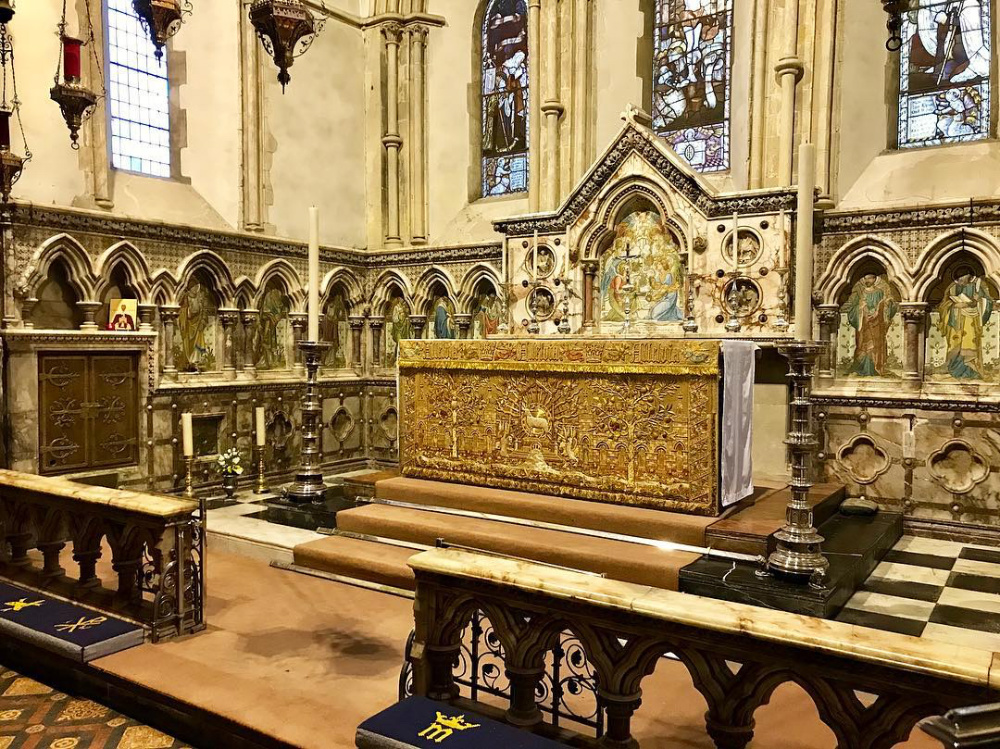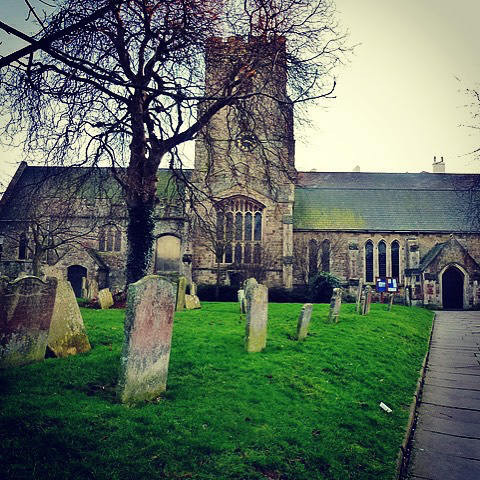Norwich, UK
Canadian, American and British designers have responded to an appeal to design a new reliquary to house the relics of St Eanswythe, the earliest verified remains of an English saint.
The Church of England parish Church of St Mary and St Eanswythe in Folkestone, Kent, made the appeal after the lead container which houses the bones has become increasingly fragile and was damaging the remains.

The high altar in the Church of St Mary & St Eanswythe Folkestone with the shrine of St Eanswythe shown in the image’s left. PICTURE: Church of St Mary and St Eanswythe, Folkestone.
An Anglo-Saxon, Eanswythe was a Kentish Royal saint and the grand-daughter of Ethelbert, the first English king to convert to Christianity under St Augustine. St Eanswythe is the patron saint of Folkestone, having founded one of the earliest English monastic communities around 660 AD on Folkestone’s Bayle. Her remains are currently the only verified remains of the Kentish royal dynesty.
Eanswythe’s shrine attracted many pilgrims to the church over the centuries, until the Dissolution of the Monasteries under King Henry VIII. To protect her relics, the monks removed them from the original reliquary, shoved them in a lead container and hid them in a hole behind the shrine. Re-discovered by the Victorians, the relics have been recently verified as being those of the Saxon saint and mark a continuous Christian witness in the area that stretches across the centuries to the modern day.
“This has brought home to us, the uniqueness of their gift to us,” said Rev Dr John Walker of the Church of St Mary & St Eanswythe. “They are historically unique – they are earliest collection of bones from a single English saint in existence. Their significance is immense. They represent the establishment of Christian faith in this part of Kent, and its continual lived expression in an unbroken line of faith communities to our own day. We feel that we are the inheritors of a faith and heritage that have been faithfully passed down the ages, and it’s our responsibility to continue that as well as we can.”
Rev Walker said the design for the new reliquary should be contemporary, “reflecting our own context, yet referencing the Anglo-Saxon culture of Eanswythe’s time”.
Around 40 potential designs have been received with a decision expected by the end of May. This will be followed by a fund-raising appeal for the next stage of the project. The new reliquary will have one transparent side, and be able fit into the existing niche, hidden behind a locked door in the wall but able to be removed from time-to-time to be checked by a conservator. It will also be placed on display occasionally such as during the Eanswythe’s Festival in early September.
Rev Walker said it was hoped the church would become a place of pilgrimage.

The Church of St Mary & St Eanswythe Folkestone. PICTURE: Church of St Mary and St Eanswythe Folkestone.
“We’re aiming to develop the church as a place of pilgrimage with not only the shrine and the relics, but with a heritage display and presentation facilities. What makes us hopeful is Eanswythe’s uniqueness. She predates both the Reformation and what’s known as the Great Schism – the split between the Orthodox Churches and the Roman Catholic Church. So she’s honoured as a saint by all Christian traditions.”
Rev Walker believes that Eanswythe’s story is extremely relevant to the modern world.
“Eanswythe made a choice not to grasp power and riches but to direct her resources and skills to create something life-giving,” he said.
“She also recognised that, to be your best self is to find yourself rooted and steady in the God who is the source of your life. Here we teach 21st century pilgrims the ancient monastic disciplines of reflective Bible reading and meditative prayer that Eanswythe would have practised. She also has something to say about the power of women in a still male-dominated world; and about the value of multi-cultural communities – for Anglo-Saxon England was connected to Europe, Africa, the Middle East and Russia through trade routes and the church.”






